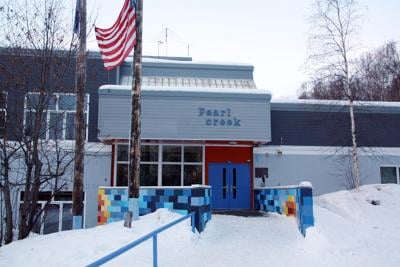When new data emerges, it’s important to incorporate it into decision-making, even if it challenges initial predictions. The school district’s administration presented a model estimating savings from closing Pearl Creek, based on projected enrollment trends and redistributing students to other schools. The projected savings of $1.7 million relied largely on eliminating administrative and service costs at Pearl Creek. However, recent surveys conducted by the Pearl Creek community — a more reliable data source — revealed flaws in the district’s model.
The surveys showed that closing Pearl Creek could result in a minimum $1.3 million loss in revenue from families leaving the district, reducing potential savings to just $400,000. Meanwhile, Pearl Creek has already attracted the interest of over 100 out-of-district students during a limited survey window — enough to more than offset the district’s projected savings.
If the school remains open, it could reach its estimated capacity of 526 students, further boosting district revenue well beyond their projected savings. This sentiment was echoed by Superintendent Luke Meinert during the discussion of closing the five proposed schools, saying, “If the board were to remove a school from the closure list, I do believe Pearl Creek has a strong potential to serve as a successful magnet school going forward, which could help close the savings gap that would have come from a full closure, and I see the opportunity in attracting new students to the district in the future.”
If the district is concerned about Pearl Creek drawing students from other neighborhood schools, a smart solution would be to approve it as a magnet school rather than a charter. This would allow the district to retain the full Base Student Allocation (BSA) for those students while still attracting new ones.
Additionally, as a STEAM-focused school, Pearl Creek could tap into significant grant funding and community partnerships, creating new revenue streams and increasing the district’s overall resources. As has been stated by Meinert and school board member Tim Doran, magnet schools don’t have to cost more, there is an infinite variety of ways to do them, and the proposed Pearl Creek STEAM Magnet does not cost more. The plan that has been put together is fiscally sound and in itself represents thousands of hours of skilled volunteer labor.
Board members who voted to close Pearl Creek have even admitted that, “It was a great proposal,” asking, “Could that magnet move?” In response, Meinert replied, “When we were talking about Pearl Creek, that community had already done a tremendous amount of work, and so that community could have stood up that school relatively quickly,” adding “To think that we would do the same thing for another school without a community behind it I think is unrealistic.” In another conversation around creative school models Meinert added, “Our strongest schools going forward are going to be those that work with the school community to build what they want,” which is exactly the work that Pearl Creek has put forth during these recent years when the model was developed.
As was stated by Doran, “Opportunity is knocking for us. We can either continue going into retrenchment with public education or we can take control of the narrative,” adding, “We see that our community is ready to be creative and innovative and to support us as a district.” Closing Pearl Creek risks worsening the district’s student enrollment decline and losing out on these opportunities.
Keeping Pearl Creek open isn’t just a win for the community — it’s a financially sound decision for the district. Let’s work together with accurate data to find solutions that benefit everyone.
Peter Miller is a lifelong Fairbanks resident. He attended Montana State University earning a Bachelors of Science in cellular biology and neuroscience and later earned an M.Ed. in secondary education from the University of Alaska Fairbanks. He currently works locally in both education and in agriculture.











